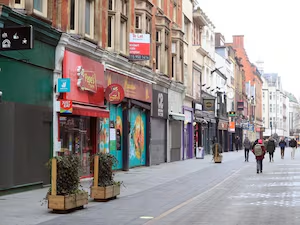Number killed or seriously injured in drink-drive crashes hits eight-year high
There were around 2,050 KSI casualties in accidents on Britain’s roads in 2019 where at least one driver was over the alcohol limit.

The number of people killed or seriously injured (KSI) in drink-drive crashes reached an eight-year high in 2019, new figures show.
There were around 2,050 KSI casualties in accidents on Britain’s roads where at least one driver was over the alcohol limit, according to Department for Transport data.
This is an 8% increase on the previous year and is the highest level since 2011.
RAC head of policy Nicholas Lyes said the figures are a “chilling reminder” that the number of people killed by drink-drivers has “barely fallen since 2010”.
He declared that “more needs to be done” to tackle the issue, and called for progress to be made around cutting reoffending such as through the use of alcohol interlocks.
A report by the Parliamentary Advisory Council for Transport Safety (Pacts) published in May stated that one in six drink-drive offences since 2010 was committed by a driver previously convicted for drink or drug-driving.
Alcohol interlocks require a driver to blow into a breath-testing device connected to the vehicle ignition system.
The vehicle will not start if alcohol in excess of the limit is detected.
The drink-drive limit in England and Wales has been 80mg of alcohol in 100ml of blood since 1967.
No other part of Europe has a limit above 50mg/100ml, according to Pacts.
The Northern Ireland Assembly passed legislation to follow Scotland’s reduction in 2018, but this has not yet come into force.
A Department for Transport spokeswoman said: “Drink-driving is illegal, and there are tough penalties in place to reflect the fact that those who choose to do it not only put their own life at risk but also the lives of others.
“We’ve launched a three-year review into roads policing and enforcement, and our award-winning Think! campaign continues to challenge social norms among high-risk drivers, having just relaunched its Pint Block campaign to empower young men to intervene when their friends plan to drive after drinking.”





